Recall leading apartment developer Tim Gurner’s warning that Australia’s rental crisis could last another 15 years due to a lack of supply relative to the nation’s strong population growth.
“If you look at the vacancy rates, it’s pretty simple, right? We have vacancy around 1% in every single state, construction supply is the lowest it’s been in 10 years”, Gurner said.
“Population growth is higher than it’s ever been. So it’s very simple mathematics to see that we’ve got the biggest undersupply in history with the highest demand in history, with population growth still growing”.
I reported last week on the National Housing Supply & Affordability Council’s (NHSAC) 2025 State of the Housing System report, which expects only 938,000 dwellings to be built nationwide by mid-2029.
The federal government’s advisory council forecast is 262,000 dwellings short of Labor’s National Housing Accord target of 1.2 million new homes over five years.
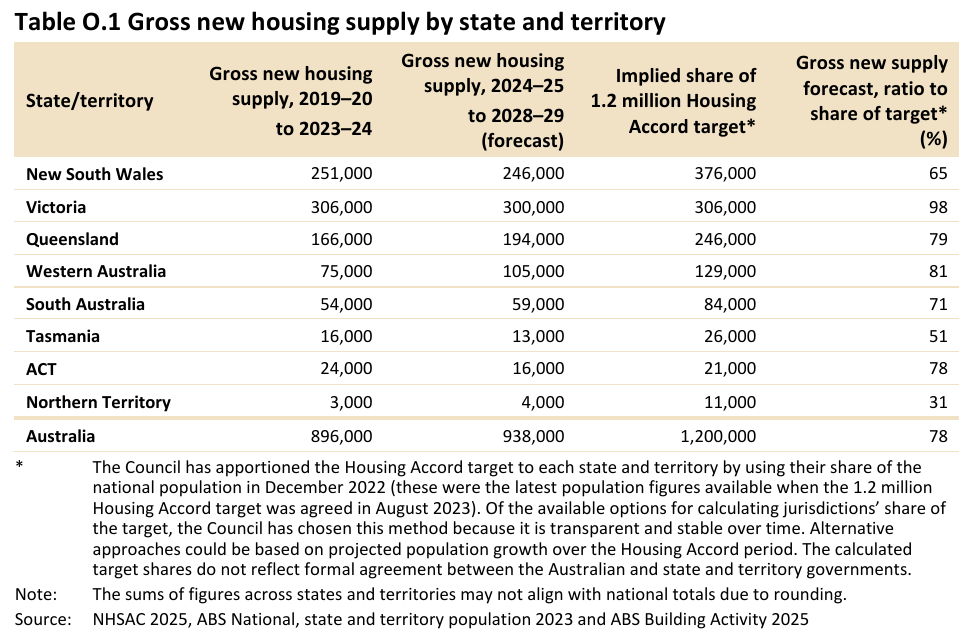
NHSAC forecasts that new housing supply will remain below population demand over the five-year National Housing Accord period:
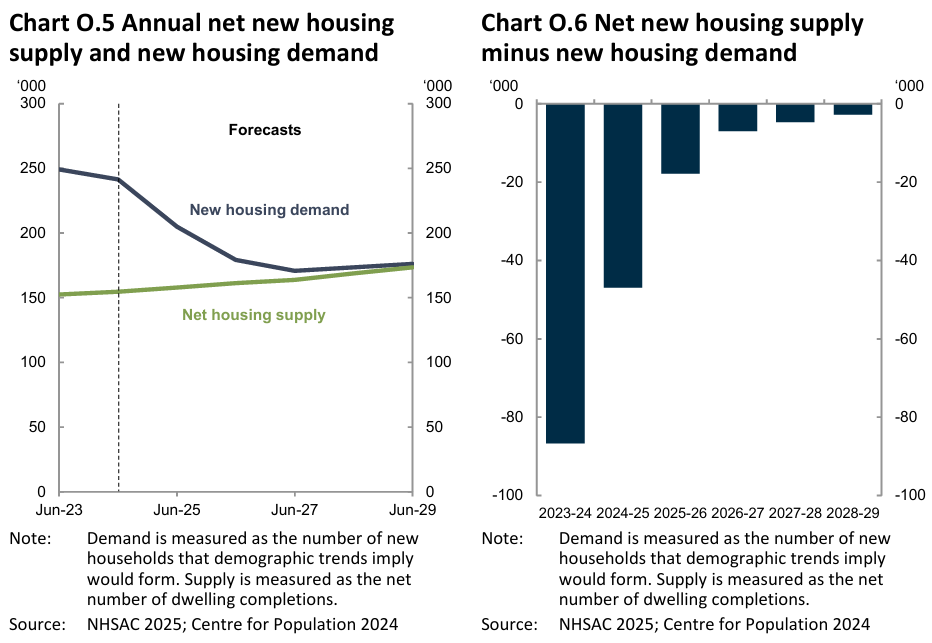
As a result, Australia’s housing shortage is projected to worsen by 79,000 dwellings over the five-year Housing Accord period:
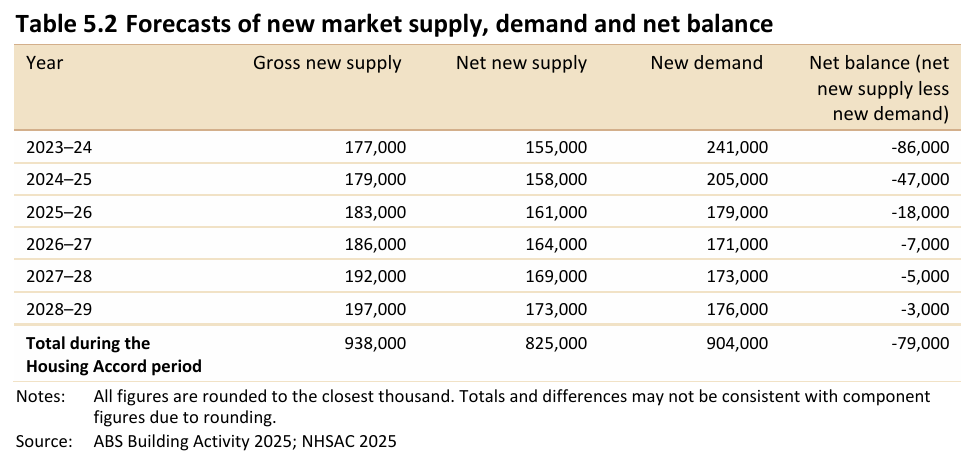
A reader named Steve pointed out that the supply situation is far worse than NHSAC suggested. As illustrated in Table 5.2 above, NHSAC omitted the 86,000 shortage in 2023-24 from its 79,000 figure.
As a result, the cumulative shortage over the six years is 86,000 + 47,000 + 18,000 + 7,000 + 5,000 + 3,000 = 166,000, not the 79,000 shown in the table.
Regardless, AMP chief economist Shane Oliver recently forecasted that Australia’s cumulative housing shortage is between 200,000 and 300,000 dwellings. Given the shortfalls forecast by NHSAC, the cumulative shortage will only worsen over the coming five years.
It is worth reiterating that NHSAC’s calculation of new demand is based primarily on forecast population growth, which will remain strong over the forecast horizon courtesy of strong net overseas migration.
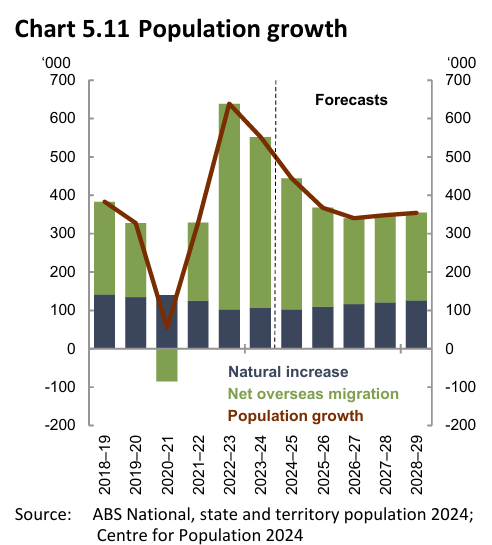
NSAC’s sensitivity analysis projected a surplus of around 40,000 homes after five years (compared with a deficit of 79,000 under the baseline projection) if population growth is just 15% less than forecast.
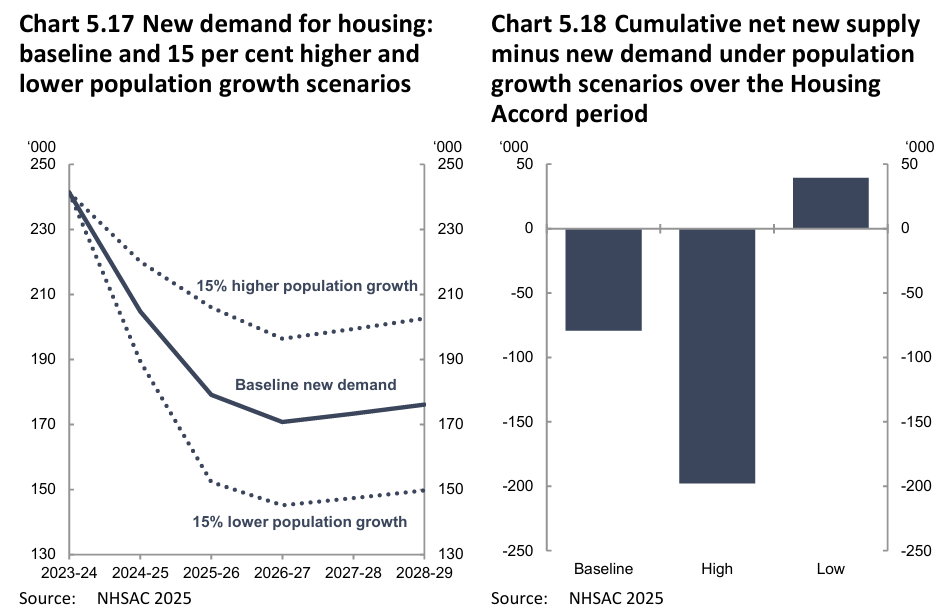
NHSAC’s report, therefore, shows in black and white that the primary solution to Australia’s housing shortage is to cut net overseas migration to a level below the nation’s capacity to build housing and infrastructure.
Regrettably, the federal government has instead chosen to accelerate immigration.
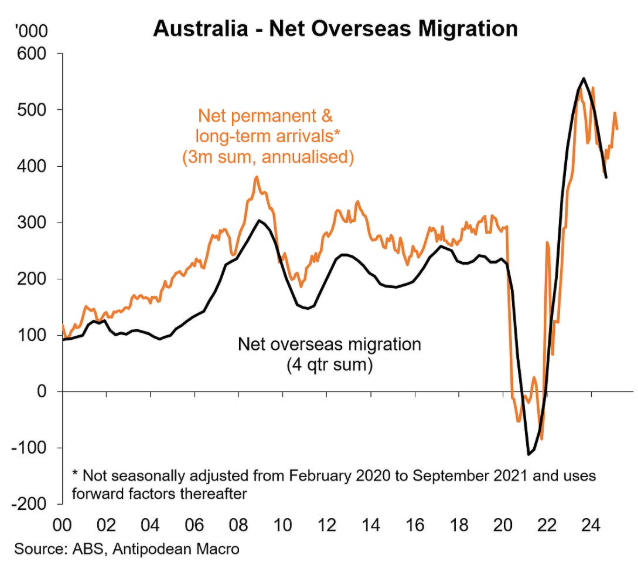
As a result, Australia’s housing crisis and rental shortage will inevitably worsen.

